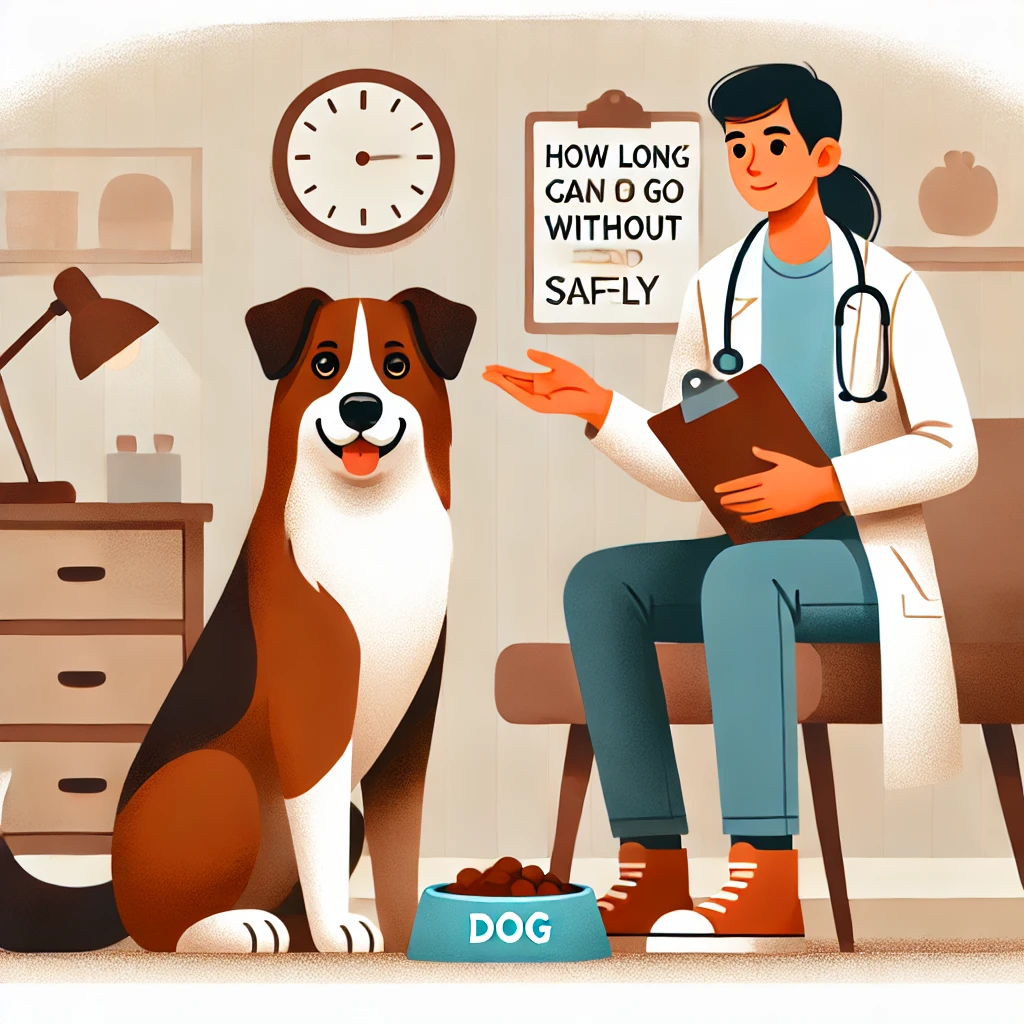How Long Can Dogs Go Without Food Safely? Expert Tips for Pet Owners
Table of Contents
How Long Can Dogs Go Without Food Safely?
How long can dogs go without food is a critical question for pet owners concerned about their dog’s overall health and well-being. While fasting might be a natural occurrence due to illness or other factors, prolonged periods without food can pose significant risks. This article explores the factors influencing a dog’s fasting duration, signs of trouble, and expert recommendations
What Factors Determine How Long a Dog Can Survive Without Eating Food?
Several factors influence a dog’s ability to go without food, ranging from age and size to overall health and activity level.
Dog’s Age and Size
- Puppies vs. Adult Dogs: Puppies have smaller energy reserves and a faster metabolism, making them more vulnerable to the effects of fasting. They typically require more frequent meals to support their growth and energy needs.
- Smaller Breeds vs. Larger Breeds: Smaller breeds, like Chihuahuas, have faster metabolisms compared to larger breeds like Labradors. This means small dogs may struggle more during fasting periods, while larger dogs can tolerate slightly longer durations.
Overall Health
- Pre-Existing Medical Conditions: Dogs with chronic illnesses such as diabetes or kidney disease are at higher risk when they skip meals. These conditions can exacerbate the effects of fasting, making timely feeding crucial.
- Hydration During Fasting: Even if a dog isn’t eating, maintaining proper hydration is critical. Dehydration can occur quickly and lead to severe complications.
Activity Level
- Energy Demands: Active dogs or working breeds, such as Border Collies or Siberian Huskies, burn more calories and require consistent nutrition. A sedentary dog might cope better during short fasting periods, but this varies greatly depending on individual metabolism.
Signs That Your Dog May Be Struggling Without Food
Prolonged fasting can lead to noticeable physical and behavioral symptoms. Being aware of these signs can help prevent severe health issues.
Physical Symptoms
- Lethargy and Weakness: A dog without adequate energy intake will often appear tired and less responsive.
- Noticeable Weight Loss: Sudden weight loss indicates your dog isn’t receiving the necessary calories to maintain body function.
Behavioral Changes
- Increased Whining or Restlessness: Hunger can cause anxiety and agitation, leading to these behaviors.
- Lack of Interest in Usual Activities: A loss of appetite often correlates with reduced enthusiasm for play or exercise.
Digestive Issues
- Vomiting or Diarrhea: These can occur as the stomach becomes irritated from prolonged emptiness.
- Dehydration Symptoms: Dry gums, sunken eyes, or excessive panting may signal dehydration, which requires immediate attention.
Expert-Recommended Timeframes for Dogs Without Food

Healthy Adult Dogs
Most healthy adult dogs can safely fast for about 24-48 hours as long as they remain hydrated. Beyond this timeframe, risks of malnutrition and organ strain increase significantly.
Puppies and Senior Dogs
- Puppies: Due to their rapid growth and limited energy reserves, puppies shouldn’t go more than 12-24 hours without food.
- Senior Dogs: Aging dogs often have reduced energy reserves and may struggle more during fasting periods. They should eat regularly to avoid complications.
Sick or Pregnant Dogs
- Sick Dogs: Dogs recovering from illness or surgery require consistent nutrition to heal properly. Missing meals can delay recovery and worsen their condition.
- Pregnant or Nursing Dogs: These dogs have heightened energy and nutrient requirements, making fasting particularly dangerous for them.
What to Do if Your Dog Refuses to Eat
A loss of appetite in dogs can stem from various causes. Understanding these and taking appropriate steps can help your pet regain their appetite.
Common Causes of Appetite Loss
- Stress: Changes in environment, routine, or new additions to the household can cause anxiety and reduce a dog’s interest in food.
- Illness: Dental problems, gastrointestinal issues, or other underlying health conditions can suppress appetite.
When to Offer Alternative Foods
- If your dog refuses their regular food, try offering bland, easily digestible options such as boiled chicken, rice, or pumpkin. These foods can stimulate appetite without upsetting their stomach.
When to Contact a Veterinarian
- If your dog hasn’t eaten for more than 48 hours (or 24 hours for puppies and seniors), it’s essential to consult a veterinarian. Warning signs such as vomiting, diarrhea, or lethargy warrant immediate attention.
Preventive Measures to Keep Your Dog Eating Regularly
Establishing a Feeding Routine
Dogs thrive on consistency. Feeding them at the same time every day helps regulate their appetite and digestion.
High-Quality Dog Foods
Providing a nutritionally balanced diet encourages regular eating habits. Choose high-quality dog foods that meet your pet’s specific dietary needs, such as grain-free or allergy-sensitive options.
Monitoring Your Dog’s Health
Regular veterinary checkups and monitoring your dog’s weight can help detect issues early and ensure they maintain a healthy eating routine.
Conclusion
Understanding how long a dog can safely go without food is essential for responsible pet ownership. By monitoring your dog’s eating behavior, recognizing signs of trouble, and taking preventive measures, you can safeguard their health and well-being. If you notice any unusual eating habits or prolonged fasting, don’t hesitate to contact your veterinarian. Remember, early intervention is key to keeping your furry friend happy and healthy.

